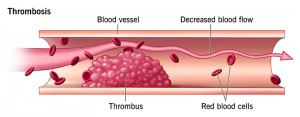What is thrombus?
Thrombus refers to the solid material formed in blood vessels, usually composed of platelets, red blood cells, white blood cells and fibrin. The formation of blood clots is a natural response of the body to injury or bleeding in order to stop bleeding and promote wound healing. However, when blood clots form abnormally or grow inappropriately within blood vessels, they can cause obstruction of blood flow, leading to a range of health problems.
Depending on the location and nature of the thrombus, thrombi can be divided into the following types:
1. Venous thrombosis: Usually occurs in the veins, often in the lower limbs, and may lead to deep vein thrombosis (DVT) and may lead to pulmonary embolism (PE).
2. Arterial Thrombosis: Usually occurs in the arteries and may lead to myocardial infarction (heart attack) or stroke (stroke).
The detection methods of thrombus mainly include the following:
1. D-Dimer Test kit : As mentioned earlier, D-Dimer is a blood test used to evaluate the presence of thrombosis in the body. Although elevated D-Dimer levels are not specific to blood clots, it can help rule out deep vein thrombosis (DVT) and pulmonary embolism (PE).
2. Ultrasound: Ultrasound (especially lower limb venous ultrasound) is a common method for detecting deep vein thrombosis. Ultrasound can see the presence of blood clots within blood vessels and assess their size and location.
3. CT Pulmonary Arteriography (CTPA): This is an imaging test used to detect pulmonary embolism. By injecting contrast material and performing a CT scan, blood clots in the pulmonary arteries can be clearly shown.
4. Magnetic Resonance Imaging (MRI): In some cases, MRI can also be used to detect blood clots, especially when evaluating blood clots in the brain (such as stroke).
5. Angiography: This is an invasive examination method that can directly observe the thrombus in the blood vessel by injecting contrast agent into the blood vessel and performing X-ray imaging. Although this method is less commonly used, it can still be effective in some complex cases.
6. Blood Tests: In addition to D-Dimer, some other blood tests (such as coagulation function tests) can also provide information about the risk of thrombosis.
We baysen medical/Wizbiotech focus on diagnosis technique for improving the quality of life, We already developed D-Dimer test kit for venous thrombus and disseminated intravascular coagulation as well as monitor thrombolytic therapy
Post time: Nov-04-2024







